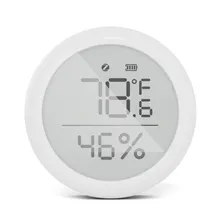Mini screens are compact liquid crystal display panels that provide visual output in various electronic devices. These mini LCD screens come in smaller sizes compared to standard monitors or larger screens, making them suitable for applications where space is limited or where portability is essential.
Benefits of mini screens
Mini screens offer various advantages, contributing to their widespread adoption in the consumer electronics market. These LCD screens boast exceptional portability, a fundamental advantage for users seeking on-the-go visual displays. Found in devices like smartphones, tablets, and handheld gaming consoles, these screens enable users to access high-resolution visual content while maintaining a lightweight and easily transportable device. Additionally, their reduced power consumption, attributed to technological advancements like LED backlighting, not only enhances battery life in portable devices but also contributes to their eco-friendliness, aligning with modern energy-efficient trends in technology.
Furthermore, the visual clarity and versatility of small LCD screens elevate their significance in various industries and applications. Despite their smaller dimensions, these screens provide vibrant colors, sharp images, and high-definition displays, ensuring a satisfying visual experience for users across diverse devices. This versatility extends to their widespread use in consumer electronics, medical devices, industrial equipment, and DIY projects, where they serve as effective interfaces for presenting data, graphics, or user interfaces. Their affordability compared to alternative display technologies further strengthens their appeal, making them accessible for integration into an extensive range of devices and applications, supporting their pervasive presence in modern technology.
Applications of mini screens
Mini screens find versatile applications across numerous industries and technologies owing to their compact size, visual clarity, and technological advancements. In consumer electronics, these screens are vital components in smartphones, tablets, portable gaming consoles, and digital cameras. Their high-resolution displays offer users access to vivid graphics, videos, and user interfaces on handheld devices, ensuring a satisfying visual experience on compact screens. Moreover, advancements like flexible LCD screens have opened new avenues in wearables and innovative gadgets, allowing for curved or bendable displays and providing both durability and flexibility in design. Additionally, transparent LCD screens, another specialized application, have been utilized in advertising displays, museum exhibits, or point-of-sale kiosks, offering a unique way to engage audiences by overlaying content onto real-world scenes or objects.
The medical industry benefits from mini LCD screens in various diagnostic and monitoring equipment. From patient monitoring devices to medical imaging systems, these screens provide clear and accurate visual outputs essential for healthcare professionals in diagnostics and patient care. Industries such as automotive and aerospace utilize mini LCD screens in instrument clusters, infotainment systems, or heads-up displays, offering drivers critical information and enhancing the overall user experience within compact interfaces. Moreover, these screens find application in emerging technologies like smart home devices and Internet of Things (IoT) products, contributing to their integration into everyday life, from smart thermostats and home security systems to wearable fitness trackers, showcasing their versatility in modern technology.









































 浙公网安备 33010002000092号
浙公网安备 33010002000092号 浙B2-20120091-4
浙B2-20120091-4